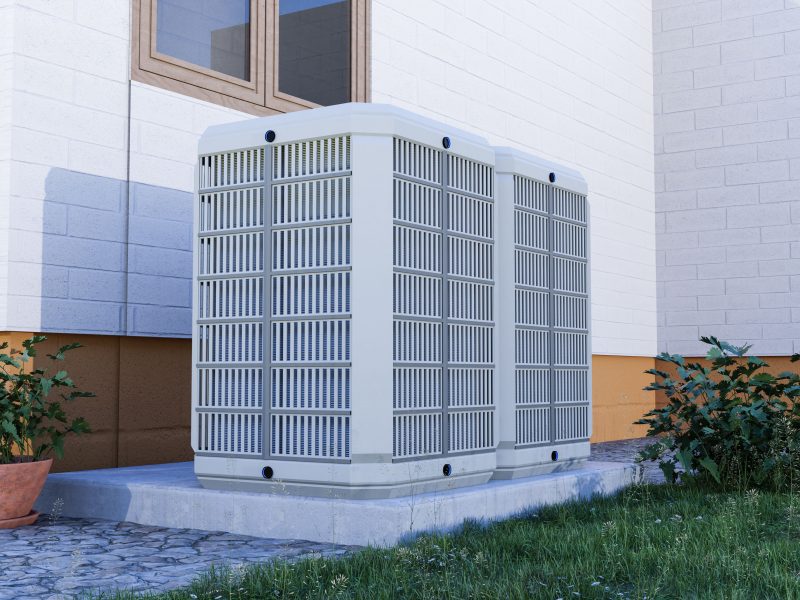
As the mercury rises and the summer sun blazes, your air conditioning system becomes your ultimate ally in maintaining indoor comfort. However, to ensure that it functions at its peak efficiency, proper maintenance is key. In this comprehensive guide, we’ll delve into the art of cleaning an air conditioning condenser, that vital component responsible for ushering in cool relief during scorching temperatures.
From the necessary tools and materials to step-by-step instructions, we’ll unravel the secrets of keeping your condenser clean and primed for optimal performance. Whether you’re a novice homeowner or a DIY enthusiast, this guide will empower you to take charge of your cooling system’s maintenance, ensuring it runs smoothly and efficiently throughout the sweltering season. Let’s embark on a journey to discover the inner workings of your AC condenser and learn how a little care can go a long way in providing the comfort you deserve.
Tools Needed:
- Garden Hose with Spray Nozzle
- Soft Bristle Brush or Fin Comb
- Screwdriver or Nut Driver (if needed)
- Safety Gloves and Goggles
Materials Needed:
- Water
- Mild Dish Soap or Coil Cleaner Solution (if recommended by manufacturer)
- Coil Fin Cleaner Spray (if needed)
- Old Towels or Plastic Sheets (to protect the surrounding area)
- Vacuum Cleaner with Soft Brush Attachment (optional)
Step-by-Step Guide:
Step 1: Turn Off Power Safety is paramount. Before working on your air conditioner, turn off the power to the unit. Locate the main breaker or disconnect switch for your AC system and switch it off to prevent any electrical accidents while cleaning.
Step 2: Clear Surrounding Area A clutter-free space around the condenser allows for proper airflow, which is crucial for efficient cooling. Remove any debris, leaves, grass clippings, or objects that might be blocking the unit’s intake and exhaust vents.
Step 3: Protect Surroundings Placing old towels or plastic sheets around the condenser helps catch water and dirt runoff during the cleaning process, preventing a messy cleanup afterward.
Step 4: Remove Top Grille The top grille (or panel) of the condenser unit is often secured with screws. Carefully remove them using a screwdriver or nut driver. Keep the screws in a safe place so you can easily reattach the grille later.
Step 5: Clean the Fins The fins, also known as the condenser coils, are the metal blades that surround the unit. They’re responsible for transferring heat. Using a soft bristle brush or a fin comb, gently clean between the fins to remove dirt and debris that obstructs airflow. This step helps your AC unit work more efficiently and cool better.
Step 6: Rinse with Water Using a garden hose with a gentle spray nozzle, rinse the fins from the inside out. Start from the inside and spray the water outward to avoid pushing debris further into the unit. The water pressure should be strong enough to remove dirt but not too forceful to damage the fins.
Step 7: Use Coil Cleaner (if needed) If the coil is still dirty, you can use a coil cleaner solution recommended by your AC manufacturer. Follow the product’s instructions carefully. Typically, you spray the solution on the coils, and it foams up to lift dirt and grime. After a few minutes, rinse the coils with water to remove the cleaner and dirt.
Step 8: Clean the Fan Blades The fan blades can accumulate dust and debris over time. Use a soft bristle brush or a vacuum cleaner with a soft brush attachment to clean them. This ensures the fan operates smoothly and effectively.
Step 9: Reassemble After cleaning, carefully reattach the top grille and secure it with the screws you removed earlier. Make sure it’s properly aligned and in place.
Step 10: Test the System Turn the power back on at the breaker or disconnect switch and test your air conditioner to ensure it’s functioning properly. You should feel cool air blowing from the vents and notice that the unit is running smoothly.
Regular cleaning of your air conditioning condenser improves its performance, extends its lifespan, and helps you maintain a comfortable indoor environment. Remember, if you’re unsure about any step or need help, it’s always a good idea to consult your air conditioning system’s manual or contact a professional HVAC technician. If you need help, you can contact us.

Comments